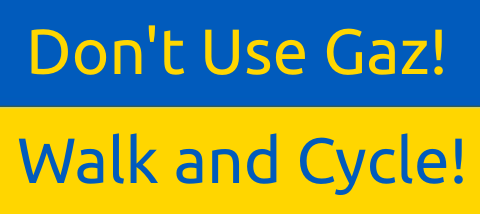
Cycling with epilepsy? How does that work? Doesn't epilepsy involve randomly falling over, unconscious, and shaking uncontrollably? It can do. That type of seizure is known as a tonic-clonic seizure, but it is just one of a range of possibilities. There are several types of epilepsy, and each varies in terms of the frequency, length, and nature of seizures.
Epilepsy can be the result of brain injury, but with most people a seizure just requires a trigger that overcomes the brain's normal resistance to neurons firing chaotically, which is what happens during a seizure. In other words, anyone can have a seizure. That resistance to chaotic firing is dependent on brain chemistry, and that varies over time depending on many factors, such as tiredness, when you last ate, and age. Obviously as we grow into adulthood our brains change enormously, which is why children can be susceptible to seizures that no longer occur in adulthood. I was diagnosed with epilepsy in my teens, which is very late for childhood epilepsy, but it did indeed disappear in adulthood. It was probably always there, just under the surface, but it's likely the additional stress of my taking O Level exams caused it to make its presence known. Being diagnosed with epilepsy only comes about if your susceptibility to seizures is sufficient to make your frequency of seizures a concern.
Childhood epilepsy typically does not show itself as tonic-clonic seizures. It more commonly takes the form of absence seizures. These are so brief and fleeting that it is highly unlikely you would be aware of a person sitting next to you having one. The following video shows a young girl experiencing several absence seizures, which without the captions would not be noticeable (those viewing this on a mobile platform will have to make do without the captions):
Whenever I had an absence seizure, I would feel strangely disconnected from the world. I would be aware of things going on around me, but I would not be able to make conscious acts in response. If someone spoke to me during the seizure, I may or may not have understood what they said. Either way I wouldn't have been able to formulate a response, let alone voice it. However, if I had understood what was said to me during the seizure, I would respond afterwards, though with some difficulty. The following video shows what it is like to experience an absence seizure:
Although epilepsy is technically a disability, an absence seizure is not so much a disability as what Terry Prachett referred to (when discussing his own condition) as an embuggerance. They are as harmless as daydreaming, but occur randomly and inconveniently. They only become disabling if they are so frequent that they leave insufficient time for ordinary life (and thus they can affect learning in children). They have an additional, most interesting feature that reduces their impact, and that is referred to in the first video. Despite playing in the pool, the girl is never in any danger, because as soon as the seizure swamps the part of the brain that appeared relatively late in evolution, the more primitive part takes control and acts to protect her. Her getting her head above the water and grabbing the hand rail is not chance. Actions that require no conscious effort continue as normal, and that is the reason why someone with absence seizures can cycle. I only remember having one seizure whilst cycling, but I have no memory of what happened during the seizure. All I know is I found myself on the pavement directly opposite the road I would have otherwise turned right into, sitting on my bike with one foot down to keep myself upright. My subconscious must have found the end of someone's driveway so I could use the dropped kerb to join the pavement, and then guided me a short distance along the pavement until it was time to apply the brakes and bring the bike to a halt. No harm ever came to me or anyone else as a result of my absence seizures, even when I was in control of something, because "safe mode" would always kick in.
Even people prone to seizures that render them completely unconscious can cycle safely, provided they reliably experience an aura a suitable time before having a seizure. Auras take the form of sensory disturbances. These might be visual, such as that shown at the top of this article, but any sense can be affected. A suitably timed aura allows someone to get to a place of safety before the onset of a seizure.
As far as driving is concerned, the DVLA is not interested in childhood epilepsy, but this is necessarily defined by whether one might be driving on public roads or not. Thus the legal definition of childhood epilepsy is any seizure that occurs under the age of 16. The British government has long had a very enlightened view about driving with epilepsy. All they ask is that you be free of seizures for a least a year. They don't care if the control is achieved naturally or through medication. Unfortunately my last seizure happened when I was 17, and that did affect my legal ability to drive. It meant my driving lessons were delayed, and then I ran into A Levels and university. I had already started work by the time I passed my test, which affected my ability to drive on business. Without my bike, I would have had no personal mobility. My bike got me to and from work for a year, along a trunk road designed solely for motorised vehicles, with no other practical option. The experience was deeply unpleasant, and made me long for a car (it was difficult and unpleasant in car too, but at least that provided protection). I did eventually pass my test and buy a car, but this being before the days of the Disability Discrimination Act, getting insurance was challenging to say the least. If it hadn't been for the only enlightened insurance company in the UK, Eagle Star, I wouldn't have been driving no matter what the DVLA said. Eagle Star didn't discriminate, though their premiums in general were higher than average. Even so, like anyone else I was only one seizure away from losing my UK-style personal mobility. Thankfully that never happened, but it could have easily been very different, given what had happened only a few years previously.
I'm sure there are those who consider that nobody diagnosed with epilepsy should be allowed to operate any vehicle, but remember what I said about how anyone could have a seizure. Many years ago the abnormally high accident rate on some French roads was analysed, and found to be caused by seizures triggered by the flickering that occurred as people drove past evenly spaced trees. The people affected had not been diagnosed with epilepsy. If you have been diagnosed, you will have been hooked up to an electroencephalogram (EEG) machine, and placed on medication, which is monitored. You may well find out what are your trigger mechanisms, and learn to avoid them. You are only declared free of epilepsy (as I have been) if a further EEG test shows you are free. So someone diagnosed with epilepsy undergoes a higher level of testing than everyone else before they are allowed to drive. Although someone having an absence seizure whilst in control of a motorised vehicle is arguably in better control than someone engaged in a phone conversation, both are highly dangerous given the typically high speed. Reactions need not be so quick on a cycle, and when things go wrong (collisions with motorised vehicles excepted), the results are rarely fatal. Just because you have epilepsy doesn't mean you lack ambition or ability, or do not need to be able to get about. Someone with epilepsy needs personal mobility as much as everyone else. Provided the nature and frequency of the seizures doesn't render the activity totally impractical, cycling offers an option that is never going to be provided by a private motor car.
It should be pretty clear that whilst there are natural features of epilepsy that allow cycling, if things went wrong in the middle of a busy junction designed only for motorised vehicles you would be in serious trouble. For those that don't benefit from these natural features, cycling with epilepsy in the UK would clearly be very dangerous, even at the rate of just one seizure a year. Things are rather different on the continent. Much cycling there is either on segregated infrastructure or on roads that are quiet by design. The Dutch do this best of course. There the minimal need to interact with motorised traffic (particularly fast and heavy traffic), along with infrastructure that is designed to be forgiving of human failings, means there is much less risk of coming to serious harm in the event of a seizure. Wide cycleways and no obstacles means that riding a trike, which of course wont fall over if the rider falls unconscious, is not a problem. Many Dutch people with disabilities ride trikes. Dutch infrastructure is considerably safer than ours. For a cyclist of my age the figure is seven times safer. That didn't happen by chance; it's the result of re-engineering to the best possible, modern standard, rather than adding sticking plaster upon sticking plaster to outdated designs as we do in the UK. Here we seem to build in danger, with features such as ludicrously narrow lanes, confusing junctions, lanes that disappear, pinch points, roundabouts that require 360° vision, and so on, creating a very hostile environment for those of us who are less than perfect.
Further Information
This Canadian video depicts the experience of having an absence seizure in a way that is very close to my own experience, but I dislike the way it has been over-dramatised (and, I have to say, my teachers were more concerned with my well-being). I much prefer this video taken from the opposite perspective in both senses. It shows not only the trigger (hyperventilation), but also that to the boy having the seizure it is more like a party trick than anything to get dramatic about. This third video shows how the person having the seizure may have partial understanding of what is being said to them during the seizure.
The firefly aura depicted at the top of the article was created by Mikael Häggström.
- Epilepsy Society: https://epilepsysociety.org.uk/
- British Epilepsy Association: https://www.epilepsy.org.uk/


